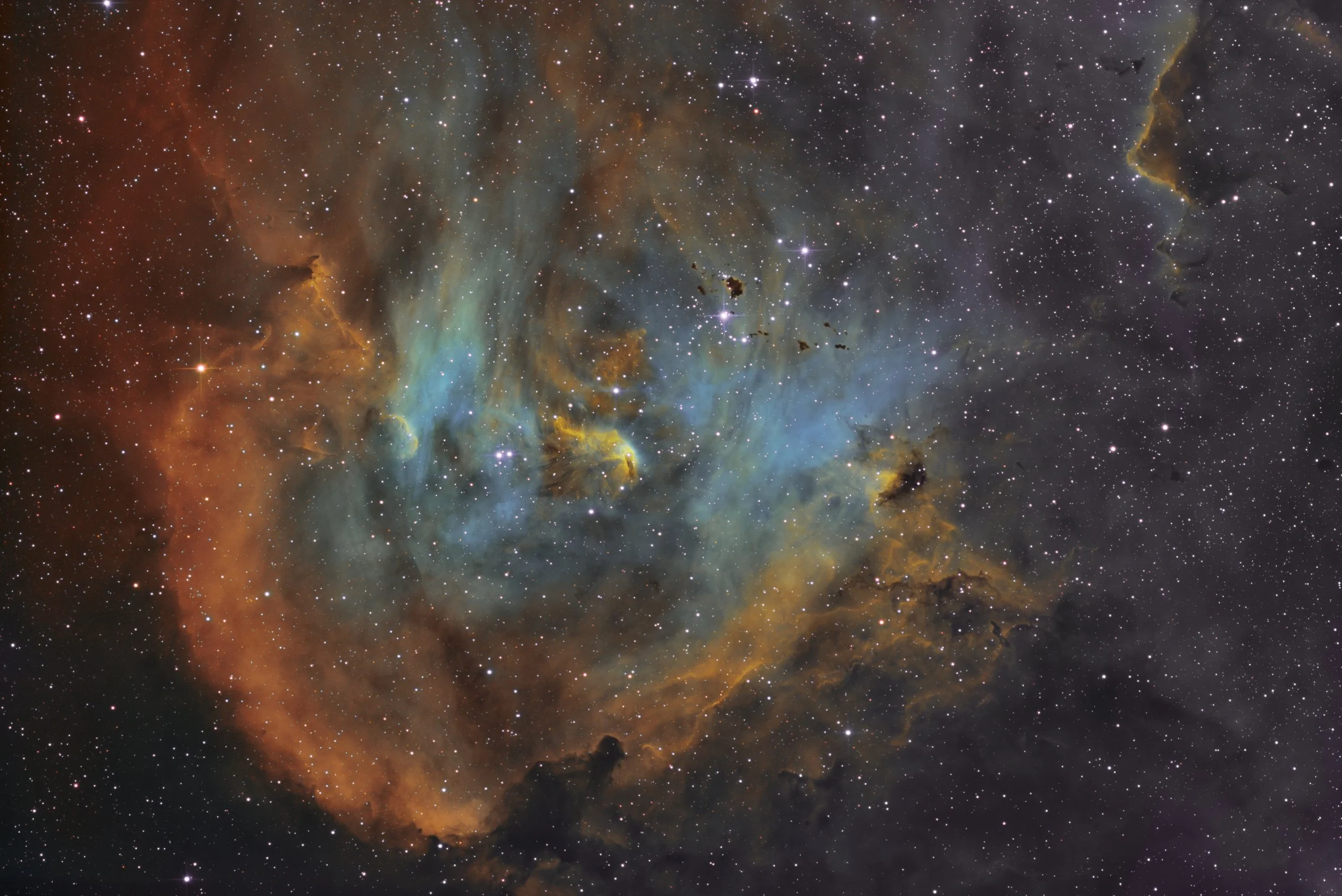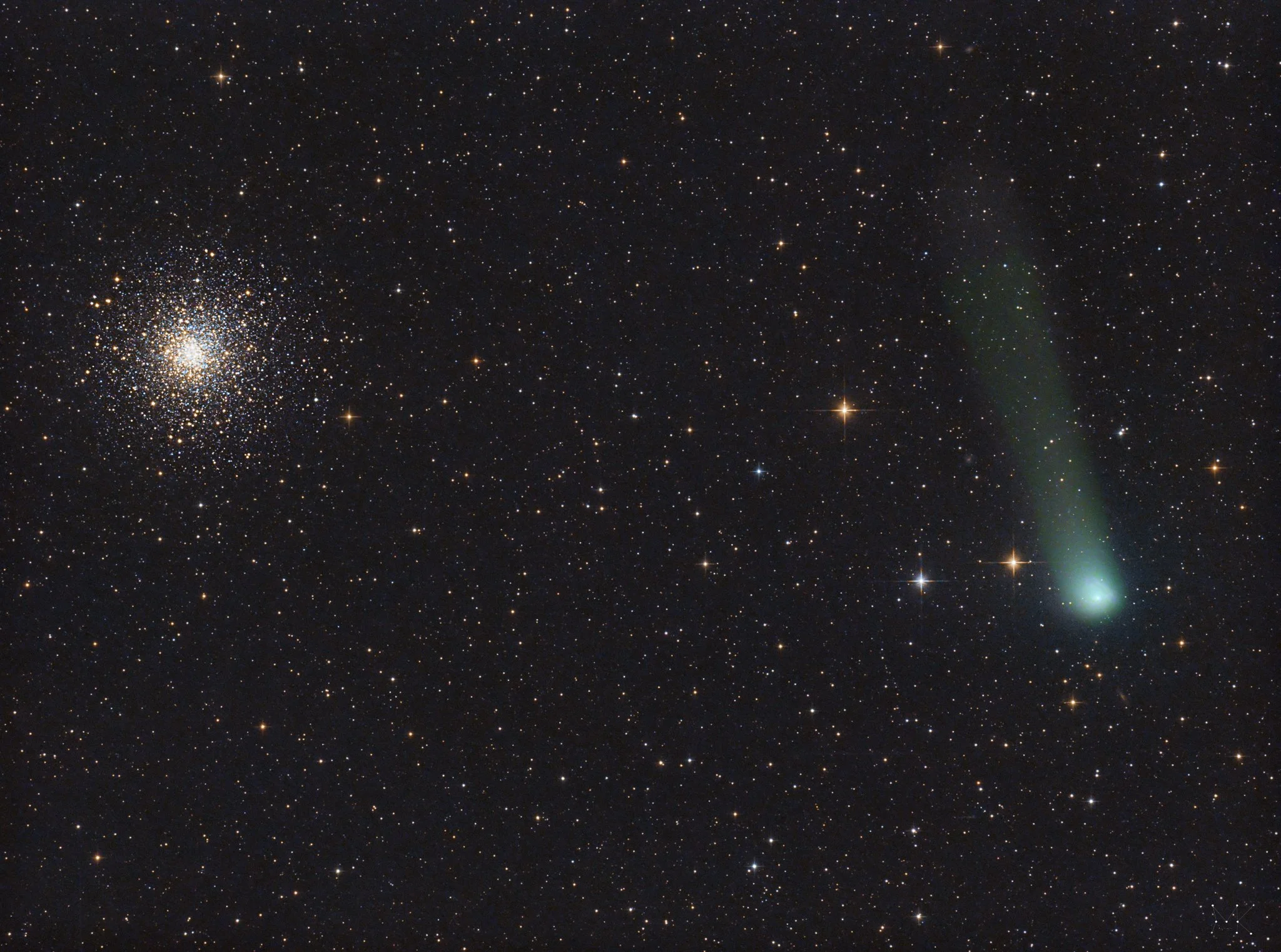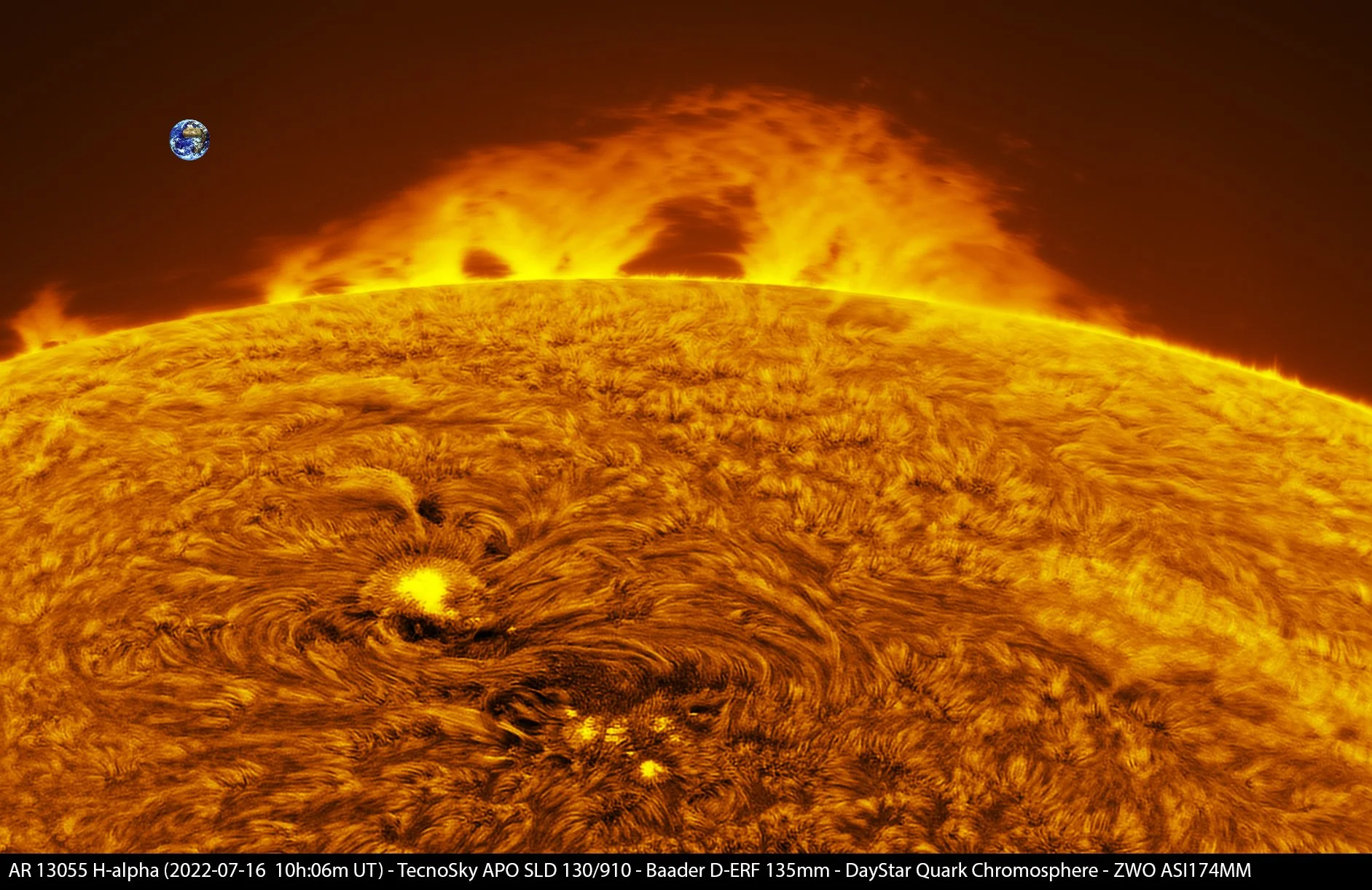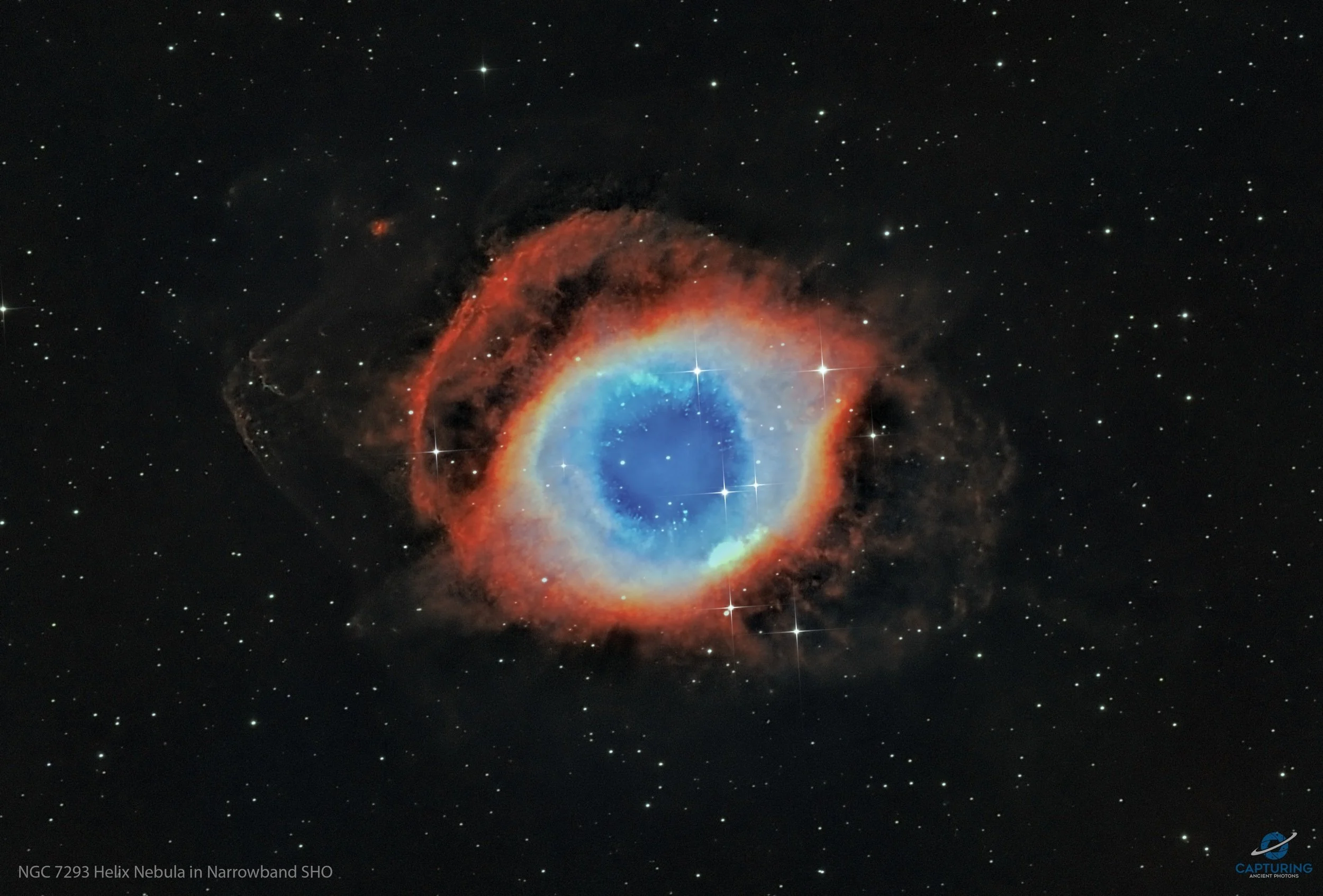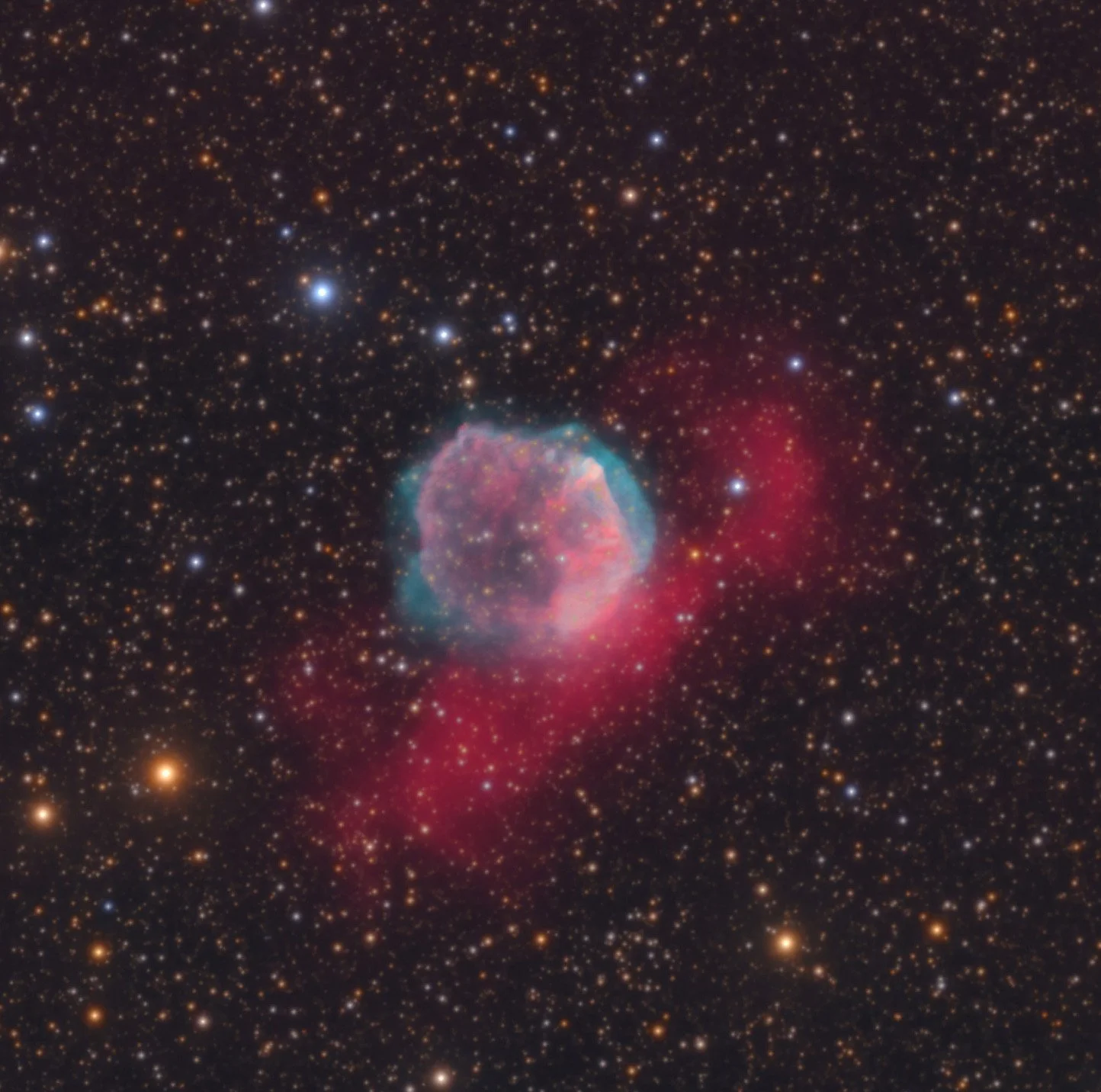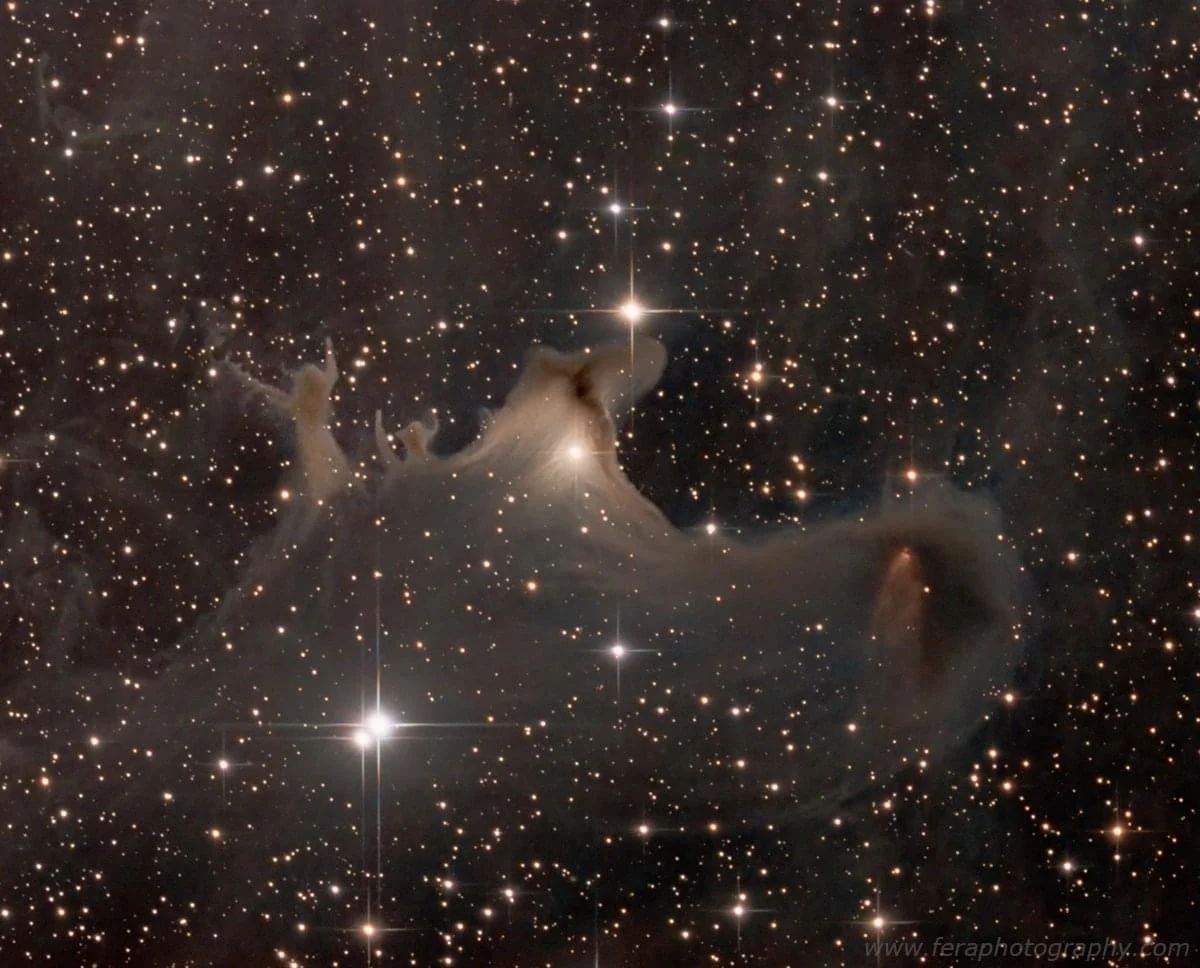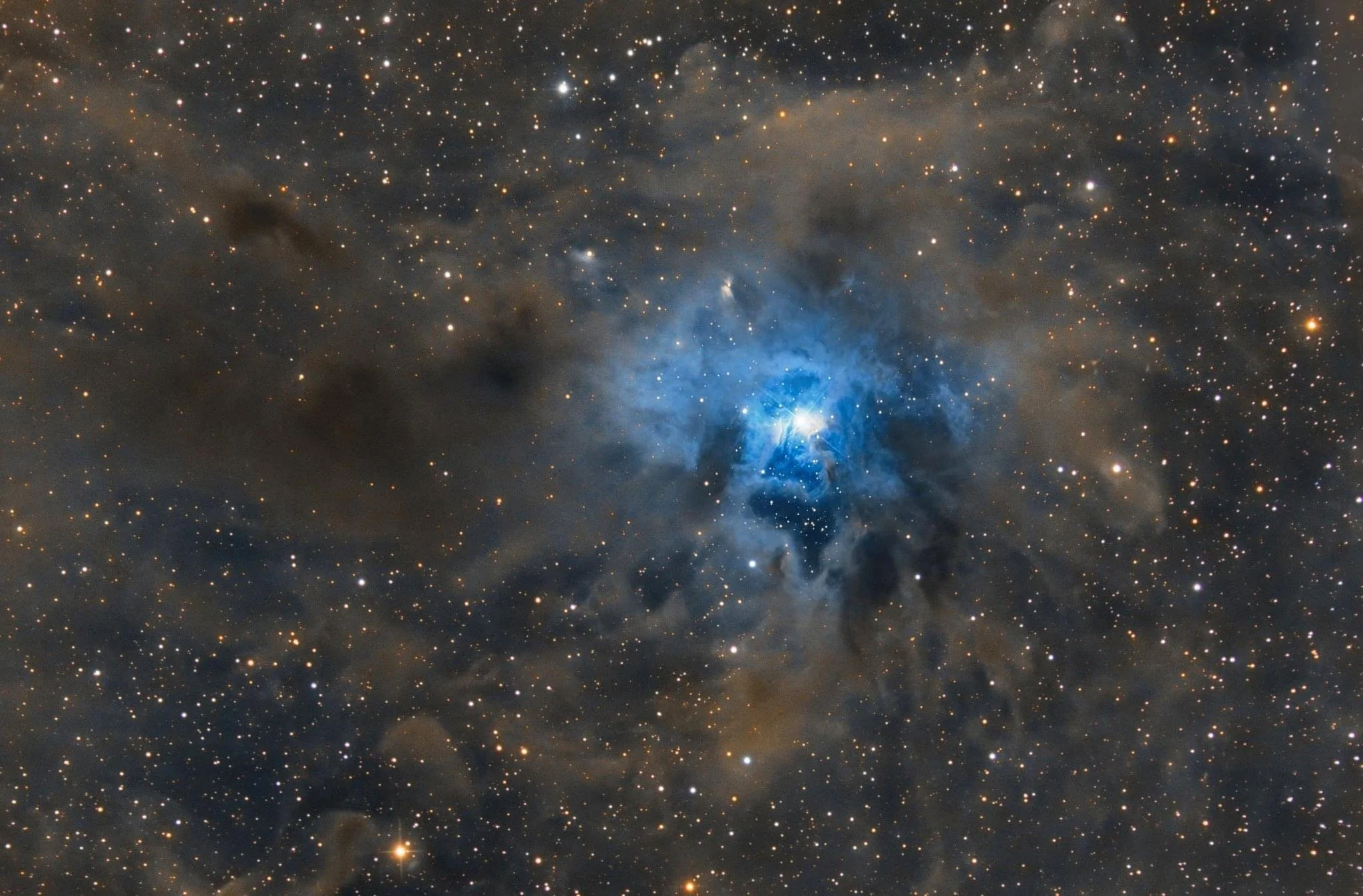
AAPOD2 Image Archives
Venus
A collection of Venus images taken from my observatory in the period April-July 2022.
The images combine Infrared, 820-920nm, and Ultraviolet, 320-380nm, data.
A Cloud discontinuity is also visible in one of the images.
The setup used:C14 Edge HD, Fornax52 mount, ASI 290mono, FFC Badder Barlow, Baader UV320-380nm, Baader SLOAN z-s'820-920nm.
Agerola-Amalfitan Coast-Italy
Copyright: Luigi Morrone
Wizard Nebula (Sh2-142)
Image Description and Details : A seasonal classic, the Wizard nebula, in a bicolor HOO version with RGB stars.
The Wizard Nebula, cataloged as Sh2-142 (Sharpless2 142) is a diffuse HII region in the constellation Cepheus associated with the star cluster NGC 7380.
Konus 200/1000 @960mm, f4.8
Qhy168c @-5 °C
Sky-Watcher Eq6r Pro
Optolong L_eXtreme 128x300"
SvBony UV/IR-cut 60x60"
Kstars/ekos, APP, PixInsight, PS
Copyright: Massimo Di Fusco
NGC 6960 - Veil Nebula
Image Description and Details :
This image was taken in South of France with an Esprit 120ED and an Asi 294MM Pro. I used Ha and OIII 4.5nm narrowband filters with 11.5 hours of exposure on the Veil Nebula in Cygnus constellation.
Copyright: Benjamin LEFEVRE
Sh2-115
Image Description and Details : Sh2-115 is a faint emission nebula in Cygnus, just about 1.5 degrees northwest of Deneb, the brightest star of the constellation. Inside Sh2-115 can be found the small open cluster Berkeley 90 . For long time Sh2-116 has been considerd a planetary nebula (even has its proper designation Abell 71, PK 085+04.1,or PN G084.9+04.4). But the recent studies describe it as a small patch of emission nebula Astrosib RC 20"+camera FLI Kepler 4040 cmos HOOrgb=19h06 no guiding The SkyX + Pixinsight + Photoshop From E-eye (Fregenal de la sierra, Spain)
Copyright: Georges Chassaigne
C 5068 : The Forsaken Nebula
Image Description and Details :
IC 5068 : The Forsaken Nebula (2 panels mosaic) This is IC 5068, a low emission nebula (composed of clouds of hydrogen gas), neglected because it is located near the very photogenic North America and Pelican nebulae. The nebula is best known for the streaks of dark clouds that separate the hydrogen-colored regions, which also separate the nebula from its better-known neighbors. (All are located 1,600 light-years away in the constellation Cygnus.) Shooting data: : ASA Newton 254/950 F3.6 : Paramount MyT : ZWO ASI2400MC at -10°C + Artesky rotator : IDAS LPS-P3 and IDAS NBZ Nebula Booster : Skywatcher Evostar72ED + ASI290MM mini : TheSkyX pro, NINA, PHD2, AstroPixel Processor, PixInsight, Photoshop : Panel N°1 = 10h15 (41x900”) in HaO3 and 4h00 (24x600") in RGB for stars : Panel N°2 = 10h30 (42x900") in HaO3 and 3h40 (22x600") in RGB for stars : TOTAL = 28h25 : Lorraine, France : Over 8 nights: June 17, 2022; June 18, 2022; June 27, 2022; June 29, 2022; July 1, 2022; July 2, 2022; July 4, 2022; July 14, 2022
Copyright: Thomas LELU
The Pillars of Creation
Image Description and Details :
I aimed to recreate the Iconic Hubble Space Telescope image Pillars of Creation. It was my first project I did at such a long focal length (Celestron C11 EdgeHD - 2800mm) and the struggle was real... :) I took my telescope to a semi-dark site for a weekend for the first tests. I knew it would take me about three nights to take this image, calculating a night's worth of shots per color (using filters for Hydrogen, Sulfur and Oxygen). I threw away the images from the entire first night (5 minute shots) as the guiding was not able to keep the stars small enough. I spent three more nights taking 1-minute subs for the final image, many of which also had to be discarded unfortunately. I ended up using a total of 175 minutes of Hydrogen, 192 minutes of Sulfur and 104 minutes of Oxygen. Celestron C11 EdgeHD Rainbow Astro RST-135, RST-300 ZWO ASI 1600MM 06-07.2022
Copyright: The Space Koala / Luca Bartek
Needle galaxy
Image Description
Location: Dark Sky New Mexico
Telescope: Planewave CDK-17
Camera: FLI PL16803
Mount: Paramount ME
Luminance: 27x20 minutes (binned 1x1)
Red: 16x15 minutes (binned 1x1)
Green: 16x15 minutes (binned 1x1)
Blue: 16x15 minutes (binned 1x1)
Copyright 2022 Bernard Miller
NGC 6888 and WR 134 widefield [HOO]
Image Description and Details : In the summer months we can capture the wonderful nebulae region in the constellation Cygnus. In this frame the beautiful Crescent nebula and the material from the hot star WR 134 with their surroundings can be seen in full glory. The image is a combination of Ha data and Oiii data. The data was captured from the backyard in the Netherlands. Equipment: - Sky-Watcher HEQ5 PRO - William Optics Redcat 51 - ZWO ASI294MM PRO bin1x1 - ZWO ASI120MM Mini - ZWO EFW 8 x 31/1.25" - Astronomik 6nm Narrowband filters SHO Acquisition: 13.3 Hours - HA: 80 x 300s - OIII: 80 x 300s
Copyright: Sven van Veen
Ic2944
Image Description and Details : Camara principal : ZWO ASI 294MM Pro Camara guia : ZWO ASI174MM mini Telescopio guia : Starguider 60/240 Filtros : Optolong 1.25" - Ha - OIII - SII Telescopio : Sky-Watcher 250 PDS Newton Montura : Ioptron Cem 70 Programas : Sharcap, PHD2, Pixinsight, photoshop, Sequence generator pro Lugar : Santiago de Chile Escala de cielo : Bortle 9 Detalle de adquisicion: Ha : 100x180" (5hr)(gain;120) - 20C bin 2x2 OIII : 60x180" (3r)(gain;120) - 20C bin 2x2 S2 : 60x180" (3Hr)(gain;120) - 20C bin 2x2
Copyright: Juan Pablo Moraga Coloma
NGC 6559
image Details:
PlaneWave CDK-20 20" f/7.7 Astrograph
PlaneWave L-500 Mount
QHY600M CMOS Camera
Total exposure: HaLRGB 11.9 hours
Sierra Remote Observatories
June 2022
Data acquisition by Eric Coles
Image processing by Bob Fera
This image presented some interesting processing challenges, but I'm pretty happy with how it came out. Big shout-out to Russ Croman and his Photoshop plugins, which were invaluable to getting this one done!
Copyright: Bob Fera
Rho Ophiuchi molecular clouds complex mosaic
Image Description and Details : The main goal of this project was to capture the exceptional, extremely colorful, gigantic region enclosing the emission, reflection and dark nebulae around stars named Rho Ophiuchi, Antares and Alniyat, as well as neighboring objects (M4 globular cluster and others). This region is commonly referred as Rho Ophiuchi Molecular Clouds Complex in the astronomical literature. The nebulae have very intensive colors depending on the ionized and molecular gas composition (yellow-orange and reddish colors) or due to the visible light reflexion (blue colored nebulae). Dark nebulae does not transmit much light due to the presence of interstellar dust. This region covers a gigantic region on the night sky compared to many other deep space objects and is located on the border of the Scorpius and Ophiuchus constellations. A total length of 8 Full Moons could be placed side-by-side on the wider, horizontal side of this mosaic. The high dynamic range of colors and contrast in each panel, as well as the size of each file (few gigabytes due to the high resolution) resulted in complex and unusually long computer processing procedures. This 4-panel mosaic is produced by combining the integrated data collected using two different telescopes (Askar FRA400 and William Optics FLT-91) in the last two years. The same astronomic camera (ZWO ASI294 MM Pro with thermoelectric cooling) and same dichroic broad-range filters (Chroma RGB set) were used. Total integration time is on average 4.5 hours per panel. Imaging sessions required a total of 7 car trips to two different locations (Rudine near Skopje and Radibush near Kriva Palanka) spanning driving around 800 km. Difference in the telescopes focal length (280 and 432 mm) and changes in the atmospheric conditions between different nights impose real processing challenge. Technical details Telescope: William Optics Fluorostar 91 and Fla t6AIII focal reducer/flattener (fl=432 mm). Imaging camera: ZWO ASI294MM Pro. Guiding camera: ZWO ASI174MM Mini via ZWO OAG;. Guiding and acquisition control: AsiAir Plus. Mount: iOptron CEM40EC. Filters: Chroma (RGB). Frames: Red: 124x180" (6h 12') (gain: 120.00) -15°C bin 1x1; Green: 128x180" (6h 24') (gain: 120.00) -15°C bin 1x1; Blue: 121x180" (6h 3') (gain: 120.00) -15°C bin 1x1. Total integration of the mosaic: 18h 39m. Integration per panel: 4h 40m. Dates: June 4, 2021 · June 8, 2021 · July 6, 2021 · May 24, 2022 · June 2, 2022 · June 27, 2022 · July 4, 2022.
Copyright: Sasho Panov
Jacoby 1 • Coffee Stain Planetary Nebula
Image Description and Details : This is one of the hardest deep space objects I have ever processed. I was well past diminishing returns in the amount of integration time I captured for my poor bortle 8 skies. I started capturing this April of this year; four months ago. It was even more challenging than the squid nebula; Ou4. While Jacoby 1 has only a designation name, I decided to call it the coffee stain planetary nebula for obvious reasons. Jacoby 1 lies within the Bootes constellation. It was discovered in 1995 by George Jacoby. It's amazing given how faint it is that he was able to discover it in the first place.
Copyright: © Douglas J Struble
C/2017 K2 (PANSTARRS) meets Messier 10
Image Description and Details : Comet C/2017 K2 (PANSTARRS) passing the globular cluster Messier 10 in constellation of ophiuchus. Distance at time of recording was 270 Mio. km from earth. I captured the image from my Garden at Schwabach (Bavaria), Germany at Bortle 5 Class. Equipment: Telescope: Skywatcher 150/750 PDS Mount: Skywatcher EQ5-Pro Camera: QHY163C (Gain 120, Offset 50, -15°C) Guiding: ZWO ASI 120 MC-S, PHD2 Recordingsoftware: N.I.N.A Exposure: 60 x 60s Lights Total exposure time: 1 Hous 50 Darks, 30 Flats, 30 Darkflats Stacking: Astropixelprocessor Image Editing: Adobe Photoshop, Adobe Lightroom
Copyright: Michael Kraus
The Heart of the Swan
Image Description and Details : The Heart of the Swan. I hope you enjoy this image as much as I enjoyed making it! 73.5 hours of exposure over the course of 19 nights. Imaging Telescope: TPO UltraWide Imaging Cameras: ZWO ASI2600MC Pro Mount: Sky-Watcher EQ6-R Pro Filters: Astronomik L-3 Luminance UV/IR Block, Optolong L-eXtreme 2" Accessories: ZWO ASIair + Guiding Telescope: ZWO 30mm Mini Guider Scope Guiding Camera: ZWO ASI290MM Mini Astronomik L-3 Luminance UV/IR Block: 200x5" (16' 40") (gain: 100.00) -10°C Optolong L-eXtreme 2": 550x480" (73h 20') (gain: 100.00) -10°C Integration: 73h 36' 40" Darks: 60 Flats: 100 Flat darks: 100 Bortle Dark-Sky Scale: 8.00
Copyright: Jeffrey Horne
Huge solar prominence
Image Description and Details : Huge solar prominence; the active region 13055 is visible on the disk. The image of the Earth was inserted for comparison. Setup: Tecnosky APO SLD 130/910, Baader D-ERF 135mm, DayStar Quark Chromosphere and ZWO ASI174MM camera.
Copyright: Salvo Lauricella
The Helix Nebula
Image Description and Details : NGC 7293 or more commonly known as the Helix Nebula or Eye of God or Eye of Sauron is a planetary nebula formed by the expanding shell of glowing gas around a dying low-mass star. It is located in the constellation Aquarius and is about 650 light years away with a diameter of about 2.5 light-years. 37 x 20min SHO subs shot @-10C taken over 4 nights for an integration time of about 12.5 hours. Equipment used: Skywatcher 10" f4 Newtonian 250P Skywatcher F4 Aplanatic Coma Corrector Skywatcher NEQ6 Pro Hypertuned by Astronomy Academy Perth ZWO ASI2600MM Pro Cooled Camera Primaluce Sesto Senso2 Electronic Focuser William Optics Uniguide 50/200mm guidescope ZWO ASI290MM Mini Guide Camera ZWO Electronic Filter Wheel Antlia Pro 36mm unmounted filters Rollon rolloff modified shed observatory Bortle 5 Data acquisition software: NINA Astronomy Software Processing software: PixInsight and Photoshop CC
Copyright: Capturing Ancient Protons
Strottner-Drechsler 16
Image Description and Details : NEW DISCOVERY: Strottner-Drechsler 16 is a new candidate of a planetary nebula in the constellation Aquila. It was discovered by the German-French team of Marcel Drechsler and Xavier Strottner in 2020 and has the catalogue designation StDr 16 / PNG 039.1-04.5. This photo, taken in collaboration with Sven Eklund from Sweden and processed by Marcel Drechsler from Germany, is the first ever taken of this faint object. Typical for planetary nebulae is a compact envelope of H-alpha and OIII surrounding a tiny white dwarf. Coordinates: 19:18:50.58 + 03:27:20.82 Constellation: Aquila Size: 2.4 arcminutes This was a joint data capture project with my good friend Sven Eklund, with data captured on both my dual rig of 6" refractors and his C14 EdgeHD - all located at Fregenal de la Sierra in Southern Spain. Data captured between 21-26 June 2022. Scopes: APM TMB LZOS 152 Refractors and Celestron C14 Edge HD Cameras: QSI6120wsg8 and ZWO ASI1600MM Pro Mounts: 10Micron GM2000 HPS and iOptron CEM120 A total of 103 hours 25 minutes (HaOIIIRGB)
Copyright: Copyright: Peter Goodhew, Sven Eklund, Marcel Drechsler, Xavier Strottner
van den Bergh 141
The Ghost Nebula - Reflection Nebula in Cepheus
PlaneWave CDK-20 20" f/7.7 Astrograph
PlaneWave L-500 Mount
QHY600M CMOS Camera
Total exposure: LRGB 9.25 hours
Sierra Remote Observatories
June 2022
Data acquisition by Eric Coles
Image processing by Bob Fera
vdB141 is an eerie-looking cloud of dust and gas that's reflecting the light of nearby stars.
Copyright: Bob Fera
Iris nebula
Four astrophotographers, 6 telescopes, 5 cameras and 129 hours of data. This is a collaboration image. We pooled our data and processed in PixInsight... the Iris Nebula in Cepheus.
Telescopes:
• Starfield Optics 8" Astrograph
• Skywatcher Esprit 100mm Refractor
• Explore Scientific 127mm CF Refractor
• OGS/RCOS R-C 10"
• Meade RCX 10"
• Skywatcher Esprit 150mm Refractor
Cameras:
• QHY268M
• QHY268C
• Atik 11000
• QSI683
• QHY16200A
Filters:
• Optolong L-R-G-B
• Astrodon E series L-R-G-B
• Astrodon True Balance L-R-G-B
Total integration time:
• 129 hours
Data acquired from:
• Kitchener, Ontario, Canada
• Guelph, Ontario, Canada
• New Mexico, USA
• Sanborn, NY, USA
Processed in PixInsight
Copyright: Shawn Nielsen / Warren A. Keller / Ron Brecher / Peter Proulx
NGC7000 and IC5070
Image Description and Details : 15 hours on NGC7000/IC5070 from the backyard with a 75mm refractor and QHY600MM! My first attempt at this target a few years ago was terrible so I couldn't wait to shoot it again. Spent 3 nights, one for each narrowband filter, and am happy with the result despite it being "only" 15 hours total.
Copyright: Antoine Grelin www.galactic-hunter.com


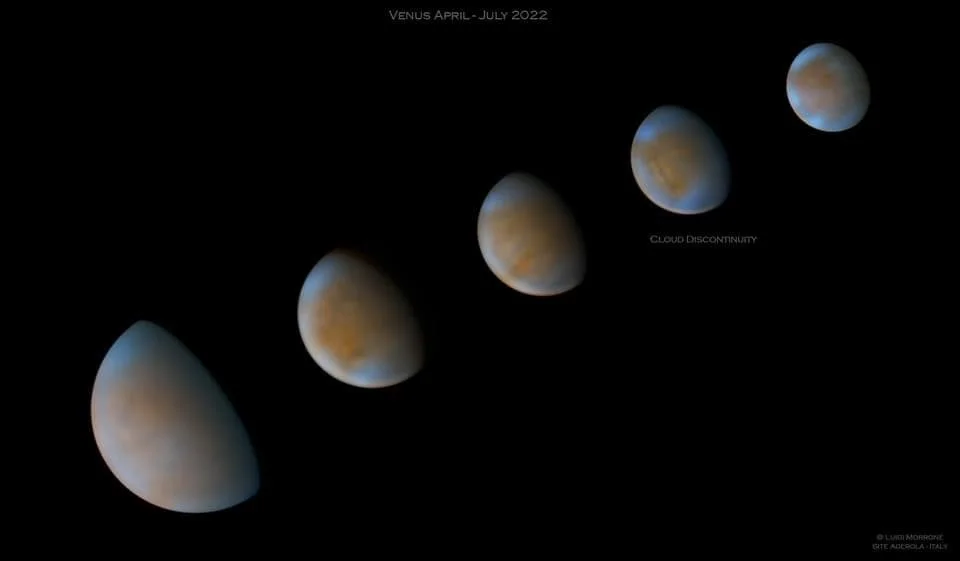
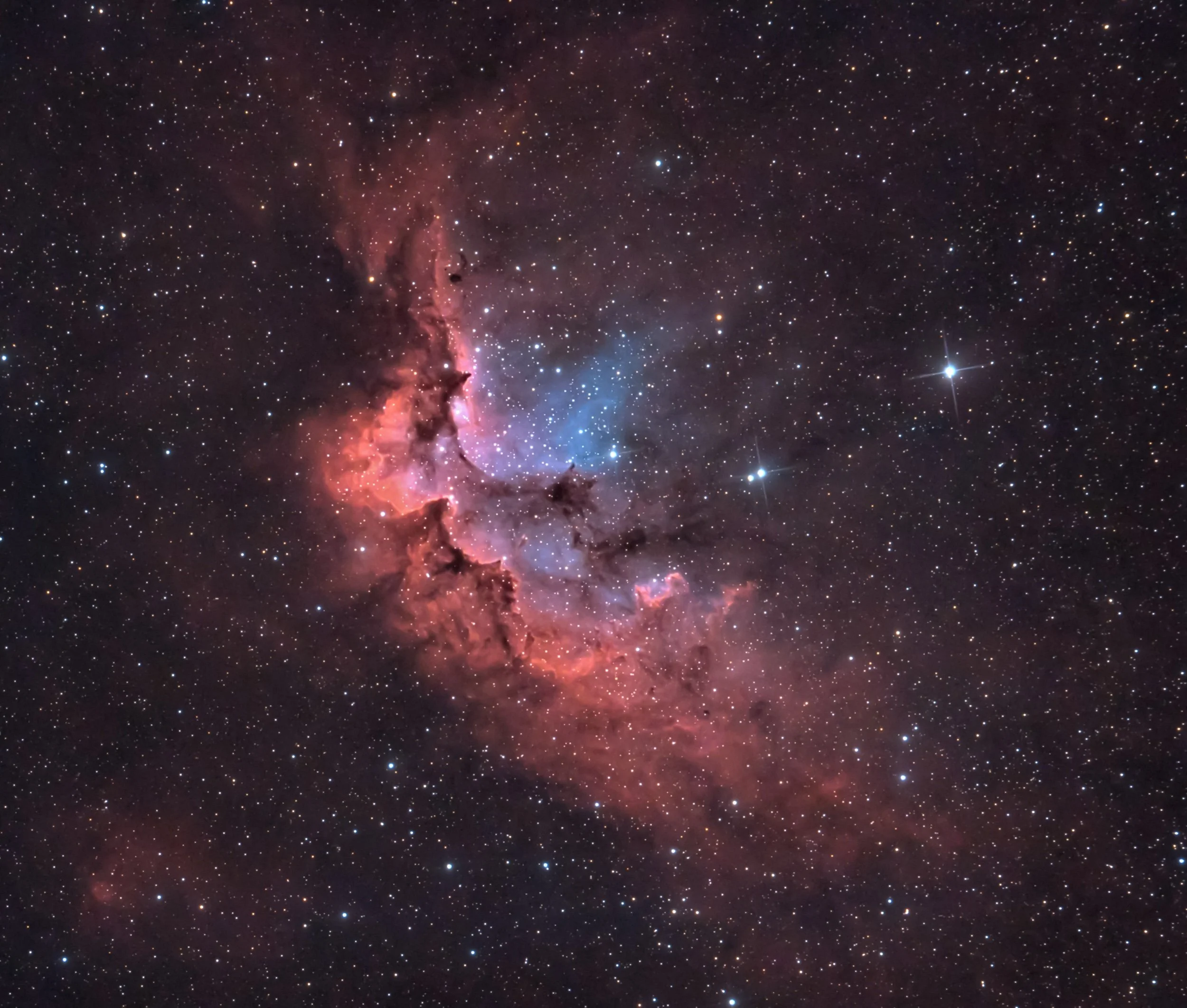



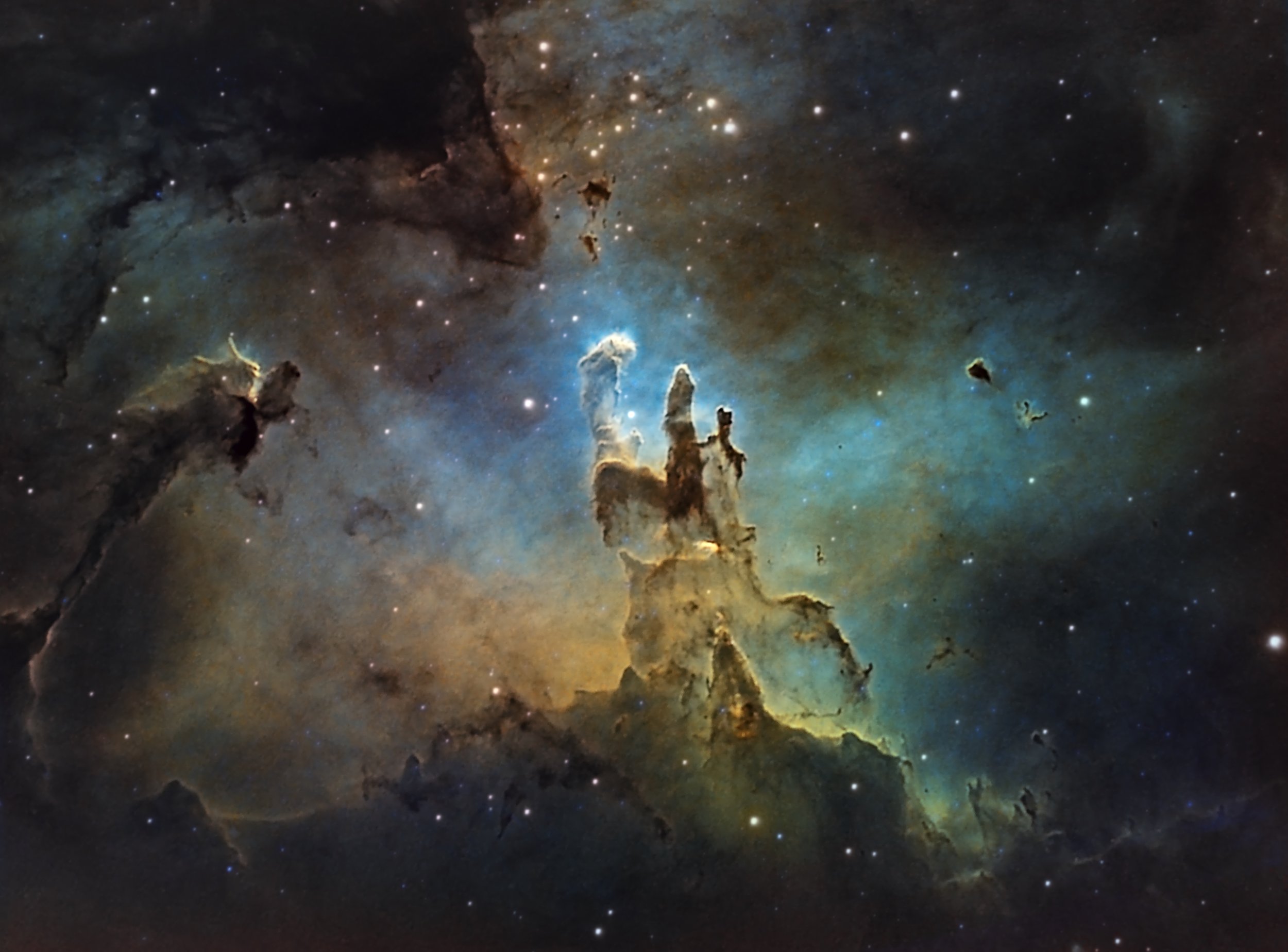
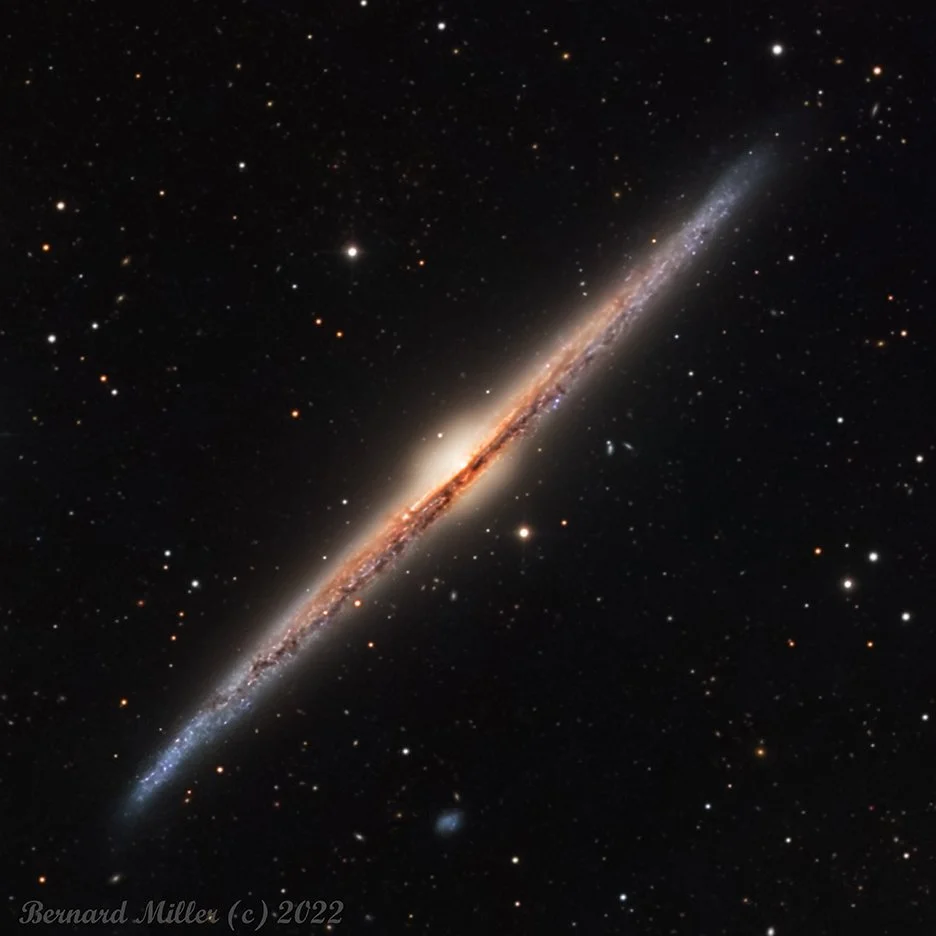
![NGC 6888 and WR 134 widefield [HOO]](https://images.squarespace-cdn.com/content/v1/5debd4b16fcd7b02905712ff/1658630975836-EOV12WMSPLD4Y88Z7VQB/Crescent%26WR-134_lowres.jpeg)
